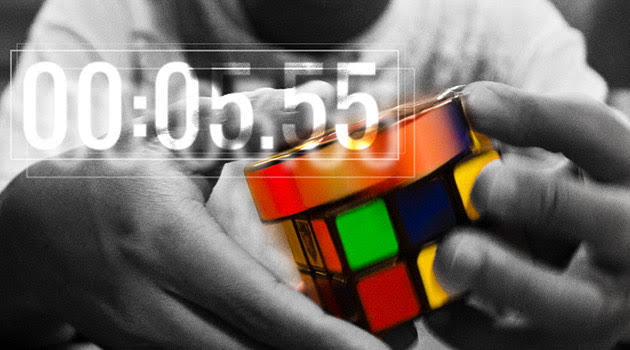With the emergence of these puzzles, the cubing community really started to grow and flourish, and we became closer and stronger. Cubing became a much bigger deal and the cubers had a lot more to do.
Cubing Competitions:
With the presence of an official organisation representing speedcubing, there was no need for third-party companies to organise cubing competitions. The WCA introduced a system where anyone could hold an official competition, as long as certain representatives were there and some rules were followed. With the introduction of this system cubing competitions became very popular and with the increase of competitions in the world, the time it took for people to solve the cube was decreasing fast.
The history of the 3×3 world record:
The world record is something every cuber wants, but it is something only a select few get. Some of the most popular speedcubers to hold world records are Mats Valk, Feliks Zemdegs, and Max Park. In fact, Feliks Zemdegs holds the world record for most world records broken! As I mentioned earlier, a world record is something every cuber wants, and the current world record is held by YuSheng Du. He is a Chinese speedcuber who actually was no better than any other cuber when he first entered the cubing arena, but luckily got a scramble that enabled him to get the single world record. The world record currently stands at 3.41 seconds.
Hardware:
The phrase ‘The clothes make the man’ is a very true one when it comes to cubing. After all, a cuber is nothing without his cube. The first Rubik’s Cube is miles away from anything a speedcuber would use now. The mechanism of the Rubik’s cube is a unique one, but the idea was not so unique. So companies were able to further improve upon the ideas of Erno Rubik to make this puzzle much better. Speedcubes have 2 main things that make them better than other variations of the Rubik’s Cube. The first, springs. Springs go near the core of the cube and it is because of springs that the cubes can move away from the core, which gives the individual pieces flexibility. This enables corner-cutting, which basically means that you can move a layer of the cube even if another isn’t aligned properly. The second important part of speedcubes is magnets. You may be wondering how magnets help a puzzle, but these have been fundamental to the numerous world records. Magnets are placed in the middle of edge pieces to help complete the move made. In a written way this might sound insignificant but in real life, I don’t think there would be a single cuber that prefers or uses a non-magnetized version of a cube.
Cubing Terms any cuber should know:
- PB: Personal Best
- Notation: Letters that represent what direction and slice needs to be moved
- Alg/ Algorithm: A set of moves designed to move pieces in a certain way, these use notation.
- Scramble: A combination of notation used to turn a solved cube into one that needs to be solved. This is used in competitions and is regulated
- Competitions/Comps: Official competitions
- WR: World Record


